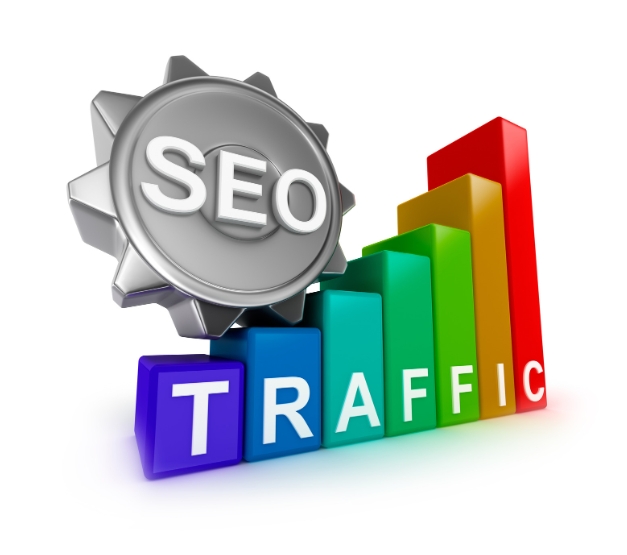In today’s digital landscape, achieving success online requires a delicate balance between two crucial elements: Search Engine Optimization (SEO) and User Experience (UX) Design. While traditionally seen as separate disciplines, the intersection of SEO and UX design is becoming increasingly important for creating a seamless online experience that not only attracts visitors but also keeps them engaged. In this blog post, we’ll explore the significance of integrating SEO and UX design principles and discuss how it can lead to a more successful online presence.
Understanding SEO and UX Design:
SEO, or Search Engine Optimization, is the practice of optimizing your website to rank higher in search engine results pages (SERPs) and attract organic traffic. This involves various tactics such as keyword optimization, backlink building, and technical optimization to improve visibility and drive relevant traffic to your site.
On the other hand, UX design focuses on creating a positive and intuitive experience for users when they interact with your website or application. This includes elements such as easy navigation, clear calls-to-action, and mobile responsiveness to ensure a seamless user experience.
The Importance of a Seamless User Experience:
A seamless user experience is crucial for several reasons. Firstly, it directly impacts user satisfaction and engagement. If visitors encounter difficulties navigating your site or accessing information, they’re likely to leave and seek alternatives, resulting in higher bounce rates and lower conversions.
Secondly, a positive user experience contributes to improved SEO rankings. Search engines like Google prioritize websites that provide a good user experience, as indicated by factors such as low bounce rates, longer dwell times, and higher engagement metrics. Therefore, by focusing on UX design, you’re not only enhancing user satisfaction but also boosting your SEO efforts.
Key Principles for Integrating SEO and UX Design:
To effectively integrate SEO and UX design principles, consider the following key principles:
- Mobile responsiveness and page load speed: Optimize your website to ensure fast loading times and seamless performance across various devices.
- Clear navigation and site structure: Organize your content in a logical manner and provide intuitive navigation to help users find what they’re looking for easily.
- High-quality, relevant content: Create valuable and informative content that addresses the needs and interests of your target audience while incorporating relevant keywords for SEO.
- User-friendly forms and conversion points: Simplify forms and conversion points to minimize friction and encourage user interaction.
By adhering to these principles, you can create a website that not only ranks well in search engines but also provides a seamless and enjoyable experience for users.
Balancing SEO Requirements with User Experience:
While optimizing for search engines is important, it’s equally essential to prioritize the needs of your users. This can sometimes lead to conflicts between SEO requirements, such as keyword optimization, and user experience.
To achieve a balance between SEO and UX design, consider the intent behind the keywords you’re targeting and ensure that your content provides value to users. Additionally, focus on creating a user-centric design that prioritizes ease of use and accessibility while incorporating SEO best practices in a natural and seamless manner.
Tools and Resources for SEO and UX Integration:
Numerous tools and resources are available to help integrate SEO and UX design effectively. For keyword research and competitor analysis, tools like SEMrush and Ahrefs can provide valuable insights into search trends and competitor strategies. Additionally, tools such as Google Analytics and Hotjar can help track user behavior and gather data to inform UX design decisions.
In terms of resources, there are plenty of online courses and guides available that cover both SEO and UX design principles. Platforms like Coursera, Udemy, and Moz offer comprehensive courses on topics ranging from keyword research to user experience optimization.
Future Trends and Considerations:
As technology continues to evolve, the intersection of SEO and UX design will become even more important. Emerging trends such as voice search, artificial intelligence, and augmented reality are reshaping the way users interact with websites and search engines.
To stay ahead of the curve, it’s essential to adapt to these trends and incorporate them into your SEO and UX design strategies. This may involve optimizing your website for voice search queries, leveraging AI-powered chatbots for customer support, or integrating augmented reality experiences to enhance user engagement.
Takeaway
The intersection of SEO and UX design is crucial for creating a seamless online experience that not only attracts visitors but also keeps them engaged and satisfied. By integrating SEO and UX design principles, you can optimize your website to rank higher in search engine results pages while providing a positive and intuitive user experience. As technology continues to evolve, staying updated on emerging trends and adapting your strategies accordingly will be key to maintaining a competitive edge in the digital landscape.
Take the first step towards online supremacy with Web Boost Online. Our SEO services are tailored to perfection, ensuring your website stands out and ranks high across search engines.











